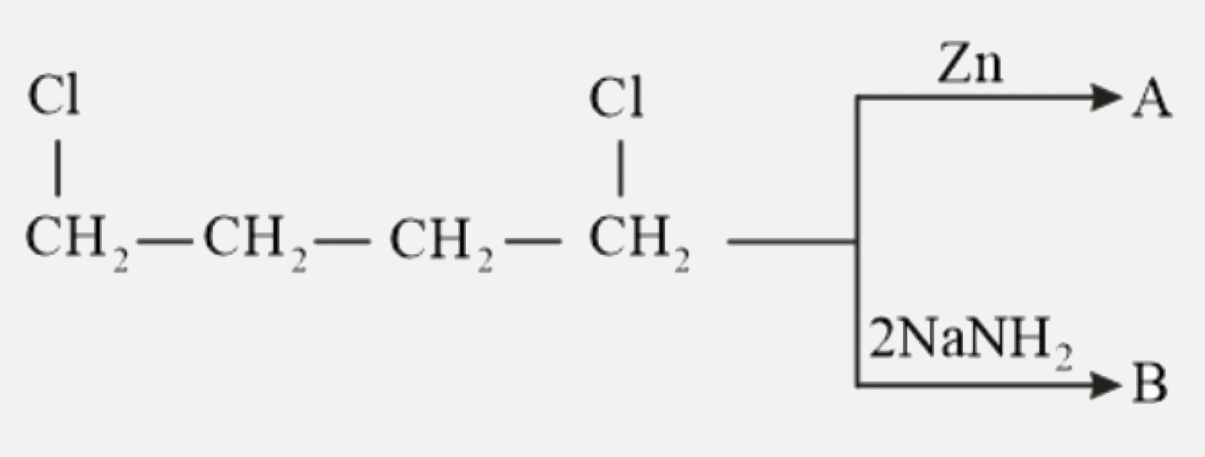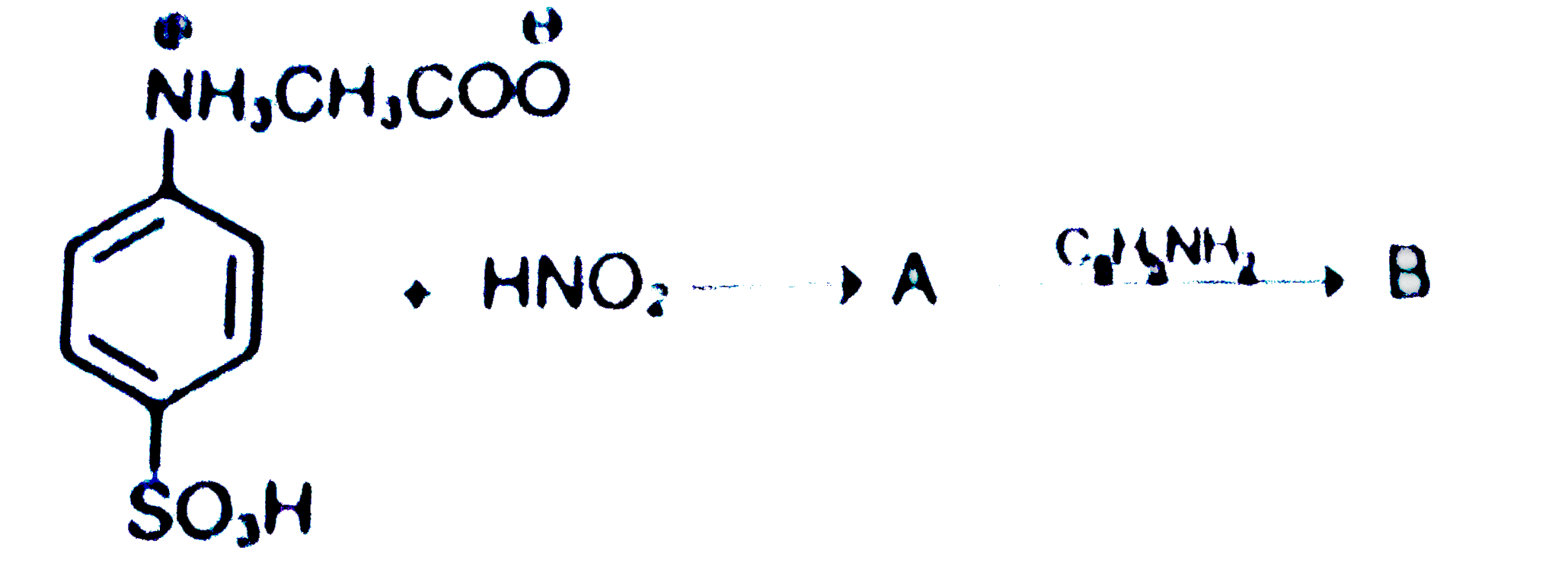On reaction with Cl2, phosphorus forms two types of halides 'A' and 'B'. Halide 'A' is yellowish-white powder but halide 'B' is colourless oily liquid. What would be the hydrolysis products of 'A' and 'B' respectively?
H3PO2,H3PO3
H3PO4,H3PO3
H3PO3,H3PO4
H3PO2,H3PO4
The correct Answer is:C
Step by step video & image solution for On reaction with Cl_(2), phosphorus forms two types of halides 'A' and 'B'. Halide 'A' is yellowish-white powder but halide 'B' is colourless oily liquid. What would be the hydrolysis products of 'A' and 'B' respectively? by Chemistry experts to help you in doubts & scoring excellent marks in Class 12 exams.
Updated on:21/07/2023Topper's Solved these Questions
- CHEMISTRY AT A GLANCEBOOK - ALLENCHAPTER - CHEMISTRY AT A GLANCEEXERCISE - ORGANIC CHEMISTRY
472 Videos
- CHEMISTRY AT A GLANCEBOOK - ALLENCHAPTER - CHEMISTRY AT A GLANCEEXERCISE - ORGANIC CHEMISTRY
472 Videos
- Chemical EquilibriumBOOK - ALLENCHAPTER - Chemical EquilibriumEXERCISE - All Questions
30 Videos
- ELECTROCHEMISTRYBOOK - ALLENCHAPTER - ELECTROCHEMISTRYEXERCISE - EXERCISE -05 [B]
38 Videos
Similar Questions
On reaction with Cl2 phosphorus forms two types of halides 'A' and 'B'.
Halide 'A' is yellowish- white powder but halide 'B' is colourless oily liquid.
Identify A and B and write the formulae of their hydrolysis products.
View SolutionWhat are the products A and B formed in the following reaction

View Solution
Knowledge Check
A translucent white waxy solid (A) reacts with excess of chlorine to give a yellowish white powder (B). (B) reacts with organic compounds containing -OH group converting them into chloro derivatives. (B) on hydrolysis gives (C) and is finally converted to phosphoric acid. (A), (B) and (C) are
A1. P4,PCl3,H3PO4B2. P4,PCl5,H3PO3C3. P4,PCl5,POCl3D4. P4,PCl3,POCl3
(a) Name two interhalogens of AB3 type.
(b) Write the hydrolysis product of lC l?
View SolutionProducts A and B formed in the following reactions are respectively:

View SolutionNaOH (Hot + Conc.) + Cl2→A+ other products and Ca(OH)2(Cold and dilute) + Cl2→B+ other products . A and B are respectively:
View SolutionAn inorganic halide (A) reacts with water to form two acids (B) and (c).(A) also reacts with NaOH to form two salts (D) and (E) which remain in solution. The solution gives white precipitate with both AgNO3 and BaCl2 solutions respectively. (A) is a useful organic reagent. Identify (A) to (E).
View SolutionNaOH (Hot + Conc.) + Cl2 rarr A + other products and Ca(OH)2(Cold and dilute) + Cl2 rarr B + other products . A and B are respectively:
View SolutionPhenol reacts with methyl chloroformate in the presence of NaOH to form product A. A reacts with Br2 to form product B. A and B are respectively
View SolutionExplain the following observations:
(a) Azide ion (N3) react with 2− bromopentane thousand times faster than with neopentyl bromide in a SN2 reaction through former is a secondary halide while latter is primary.
(b) What will happen to the stereochemistry of product of the following reaction:

(c) What will happens to the rate if the concentration of alkyl bromide in (b) is doubled?
(d) Wha will happen to the rate if the concentration of azide ion in (b) is doubled?
(e) How the sign of optical rotation of reactant and product are related in (b)
(f) When allowed to stand in dilute H2SO4 laevo-rotatory 2-butanol slowly loss optical activity.
View Solution
